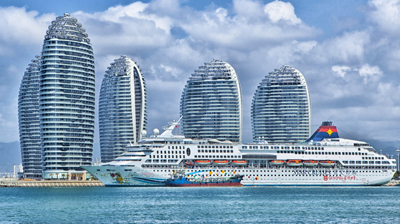
Santander and Bank of Shanghai have announced a strategic alliance as part of China’s Belt and Road initiative, one of the world’s biggest infrastructure projects.
The memorandum of understanding between the two banks will focus on Europe and Latin America elements of the Chinese-led project to connect its mainland, the ASEAN countries, the Middle East, and Central and Eastern Europe via road and maritime routes.
The initiative is set to be the defining legacy of Xi Jinping, China’s president, which has already attracted world leaders to discuss how the initiative will develop.
It is intended to stimulate economic growth across Asia with massive infrastructure projects to accelerate international trade, with estimates suggesting China is pumping $150 billion into related projects each year. Ratings agency Fitch estimates $900 billion in projects are planned or underway.
Among hundreds of major projects as part of the initiative, dubbed ‘the new Silk Road’, are pipelines, a port in Pakistan, bridges in Bangladesh and railways to Russia.
Bank of Shanghai is supporting enterprises focused on globalizing their business in the main areas of infrastructure construction, international production capacity and equipment manufacturing. Under the terms of their agreement, Santander and Bank of Shanghai will jointly provide financial services to Chinese enterprises in their overseas investments related to the initiative in areas such as settlement and trade finance, corporate business, treasury and investment banking.
Eight of Santander’s nine core markets are along the Belt and Road region.
Antony Hung, regional head for Asia Pacific, Santander Group, said: “Santander’s purpose is to help people and businesses prosper. I firmly believe that Santander, through its close cooperation with Bank of Shanghai, will make the most of the regional complementarity of both institutions and become a firm practitioner of the Belt and Road initiative”.
The name Belt and Road comes from the initiative’s Chinese name yi dai yi lu or ‘one belt, one road’.
It has two main areas of focus, the ‘Silk Road Economic Belt’ and the ‘21st Century Maritime Silk Road’, which refers to a sea route linking China to east Africa and the Mediterranean.




